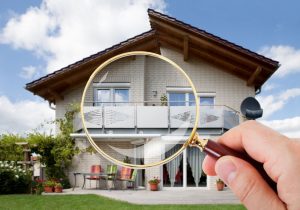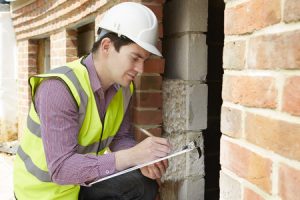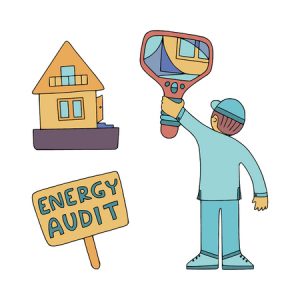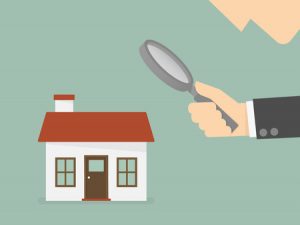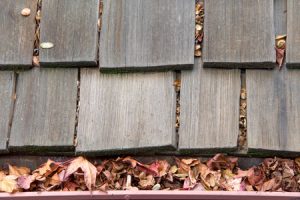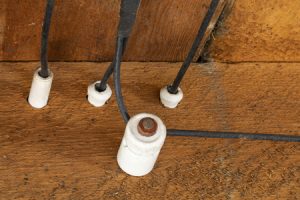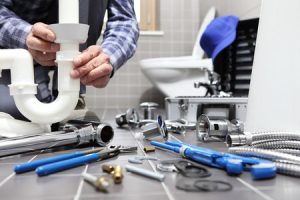Whether from a torrential rainstorm, heaps of melting snow, or a leaky dishwasher, flooding can cause massive damage in your home. What’s more, clean-up can be extremely time-consuming and expensive, especially without expert advice. That’s why Redfin rounded up flooding prevention and restoration experts from Bend to Atlanta. Read on to see the best tips for protecting your home against flooding and what to do if you’ve already been affected!

First Choice Inspectors: At First Choice Inspectors, LLC, we recommend that all homeowners that have basements or crawl spaces install a drain tile system and sump pump system with a battery backup system which will help to divert water away from the foundation of the house. We also recommend that the grading to the property provide sufficient water runoff so the property is not sitting at the bottom of a hill. After a home floods it’s important to get the pros in and fix the flood damage by installing proper waterproofing materials and make sure that no mold is growing. Proper remediation is very important before restoration!
Valley Home Inspections:
1. Check all angle stops (shut off valves) at least once a year to make sure they are operational. If you see signs of corrosion, you will want a professional to evaluate. Angle stops are located under all sinks, at the water connections for your toilet (usually behind the toilet) and laundry hose bibs.
2. Check all windows and doors for cracking (including any decorative trim over the window or door), these should be sealed to keep the water out.
3. Take a look at your water heater, do you see dripping or corrosion on a valve? If so, don’t ignore it. We see many water heaters that have been ignored with the water seeping into the areas around it. Addressing early on can save thousands in repairs.
4. Showers and tubs. These are used almost daily. When you see water dripping out a corner, corrosion along the door tracks, or cracks in the surfaces (very common between the tub or shower floor and the surround), take measures to repair immediately. If water gets into these areas it will seep behind the adjacent walls, and given the right environment, it will grow mold.
House to Home Inspections: While it is not possible to fully eliminate the possibility of flooding in the home, there are steps that can be taken to help reduce the chances of experiencing a flood or at the very least to minimize the amount of water that could affect the home. Extend the downspouts at least 4-6 feet away from the foundation or into a subsurface drain that runs out to the edge of the property, preferably downhill. Grade the soil to slope away from the foundation, roughly ½” per foot for at least 10 feet. This will help to direct water away from the foundation. Installation of a French drain system can also help to direct surface water away from the foundation. Proper installation of a sump pump either in the basement or in the crawlspace will also help mitigate water intrusion.
Flood repair and restoration work can be very expensive, costing up to tens of thousands of dollars and while not guaranteed to prevent flooding these simple steps will help to minimize water around the house and improve the overall quality and comfort of the home.
Brick Restoration: After home flooding has occurred, it’s often necessary to replace the framing around the bottom course of the home. If that’s needed, or you want to opt for the extra protection anyway, you can choose to have an Ice and Water Shield waterproof membrane installed around your home between the brick and the framing. Those that are safe from high water might still suffer damage from heavy rains. For this, we recommend having the chimney and brick veneer checked yearly for any cracks or holes in the brick and mortar which can lead to water leaks or more serious damage in the long run.
Ocean Breezes Home Inspections: The most important thing you can do is air everything out immediately. Floodwaters bring in mold spores, and with new construction practices things don’t dry out like days of old. If the water got inside, walls will most likely need to be gutted, inside and out. I’ve been called many times for inspections and testing where a remediation company or contractor did not open up the outer walls. The house wrap holds moisture in – thus allowing for mold even when the inner walls were gutted.
Advanced Look Property Inspections: As Advanced Look Property Inspections, LLC is one of Metro Orlando’s Best Home Inspectors, we know one of the most important systems we inspect and talk to our clients about is the plumbing system, because after “Wind”, non-weather related water damage and flooding is the insurance industries number 1 area of claims due to broken pipes or appliances like washing machines, dishwashers or water heaters having an issue.
A little precaution can go a long way when it comes to maintaining your plumbing and appliances but it is well worth it when you think of all the personal items (pictures, papers …) you’re protecting if you keep everything from a water problem in your home. Nowadays with all the “Smart Items” for your home, you can go one step further and install a Water Sensor System in your House. Some just send out a basic notification that there’s a problem at home through an app, (which I don’t recommend). Others can actually turn the water off to prevent any further leaking/flooding in your house. The latter is sure to increase the value of your home and some insurance companies will give you a discount on your Home Owners Policy for having that protection and they all cost less than your deductible. Sounds like a win win to me : ).
DryFast Property Restoration: Add insulation to outside walls that contain pipes. Exterior walls can get much colder than inside walls. If you have plumbing in outside walls, you may want to add an extra layer of insulation to ensure that your pipes are protected. If you see moisture or mold on the interior wall surface, surface cracks or nail pops, or your walls feel cool to the touch, consider reinsulating to add protection.
Home Inspection Headquarters: Water comes from 2 areas, outside or inside. Efficient lot drainage and water removal systems at the exterior of your home is the best way to keep outside water out. Then you want to protect your interior pipes and get your plumbing system evaluated every year by a professional. Do these things and you’re doing it right!
Reliable Basement Services: There is no cookie-cutter, one-size-fits-all approach to waterproofing and flood prevention. The more information and history you can give a professional waterproofing contractor, the better they should be able to design a complete system for your unique home. Everything – gutters, yard drainage, drain tile systems, sump pumps, catch basins, etc. – should be considered. Do not buy into gimmicks and quick-fixes; all waterproofing and flood prevention is a VERY important long-term investment in your home.
Flood Pros: Keeping water far away from the house is the best advice we can give. Shut off water when you leave the house more than a day, check and test your sump pumps annually ensuring that the drainage pipe is not frozen or clogged, USE downspout extensions – they work great!
Integrity Restoration: Water damage is a progressive condition. While there is almost no mold problem we can’t later resolve, the best mold problem is none at all. If you act within the first 48 hours of materials becoming wet, mold can almost always be prevented by professional assessment and mechanical structural drying (meaning dehumidification, air movement and air filtration for your protection). My best advice is to call a reputable certified professional as soon as you realize that water damage has occurred.
Common Sense Inspections: Proper Drying is Important: What is most important is how fast and how well the flooded areas are dried. If there was a fire you would not let it put itself out. With moisture you must not let it dry itself out. Many times a person will think that moisture was removed, when in fact enough moisture was left behind to allow mold to start growing. If a minor amount of moisture is lingering inside the wall cavities, behind the baseboards, in the carpet, or under the carpet padding it will likely be weeks before it all dries up, by that time the mold starts forming as visible sports on your walls. Many mold remediators and carpet cleaning companies will focus efforts on drying the room that flooded and neglect nearby rooms where water flowed hidden inside wall cavities and under carpet or even tile.
Sacramento Home Inspections: A quick online search will show a wide array of enterprising flood prevention techniques and equipment in action, but the reality is most people are not so proactive or enterprising when it comes to flood prevention. This is one of the reasons why U.S. homeowners who have a mortgage and who live in a “special flood hazard area,” are required to buy flood insurance; whereas if the property is in a moderate-to-low-risk area federal law does not require flood insurance. It is highly recommended, however, because historically about one-in-four flood claims come from these ‘moderate-to-low-risk’ areas. That is worth thinking about, especially when considering the devastating impact a flood will have on a residential building and therefore one’s bank account.
Yellow Hat Inspections: Shingles, Tiles, and Openings are Paths to Intrusion over Time, (STOPIT). We need to stop water intrusion before it becomes a flood! Over time, a small leak can do as much damage as a catastrophic flood so remember STOPIT! Shingles, Tiles, and Openings are Paths to Intrusion over Time, (STOPIT) and we need to stop it before it starts! Water is a devious opponent. We need it but in the right place. Water intrusion through roof shingles or tiles can create paths into our homes. The invasion is often only visible some distance from where it started. You might have a musty smell or a small stain on a wall or ceiling which may indicate a significant problem. You need to pay attention to these little clues!
Craftsman Home Inspections: Floods aren’t always due to actual flooding from Mother Nature or weather. Many home floods come from very preventable sources. At Craftsman Home Inspections LLC in Colorado, we suggest being proactive by self inspecting your water heater on a regular basis – at least every 3 months. Simply look for signs of rust, water-related damage or active leaks, even very slow ones. Look at the TPR valve, and follow the discharge tube. If the discharge tube is warm towards the bottom and it’s wet at the end of the tube/pipe then you should have the TPR valve and water heater serviced by a professional plumber. If rusting is present on the exterior of the water heater, then you should have it serviced to prevent a future leak and the inevitable water damage. Many floods in-home begin at the water heater.
Another way that a homeowner can be proactive in preventing water-related damage is to have a certified or licensed home inspector perform a sewer inspection before you purchase your home. In a professional sewer inspection, the inspector will be able to locate root intrusion (blockage), low spots, or damage and suggest repairs. This can be a big help to protect the home from future backups and flooding. This also allows you to negotiate repairs before you own the home. A professional Home Inspector will also look for signs of past flooding in basements or crawlspaces like stains on base trim or drywall repairs low on the walls.
Armchair Builder: Probably the best way to avoid major flood damage is to detect the water prior to the damage occurring. A simple, ten dollar water alarm placed near the basement sump crock will alert owners with a high pitched sound when water breaches the top of the sump crock and reaches the floor. So if the sump pump stops working or is overwhelmed by large amounts of groundwater, the alarm will notify the occupants that action must be taken immediately to avoid damage to furnaces, water heaters, and owner possessions. And probably the best part about these water alarms…there is absolutely no effort required for installation. Just put the battery in and set the unit on the floor.
Signet Home Inspections: When inspecting a house for potential homebuyers, unless there is an access panel (and there usually is not), most home inspectors will not fill a bathtub to check the overflow for leaks due to it being hidden from view and the possible damage it may cause should it leak. Because of this unseen flooding potential, it may be prudent for the homebuyer to have the seller confirm serviceability by either filling the tub to the overflow level to be sure it does not leak (which can cause damage if it does) or calling a professional plumber to remove and inspect the overflow tube and its rubber gasket which can begin to deteriorate after approximately 10 years. Of course, if you already own the home, the same precaution applies to you the owner.
Timberline Inspections: Central Alabama is always prone to flooding issues regardless of whether the structure rests in a flood zone since we see an average of 54 inches of rain annually, so we have had our share of experience with it. The absolute first thing that needs to be done is the exterior drainage controlled and the source of the moisture eliminated. Even with excess rains, this can typically be solved using a combination of gutters, swales, and landscaping. Every 1000sqf of roof space with 1 inch of rainfall deposits an estimated 600 gallons of water directly next to your home and foundation. Before any repairs start you need to dry the interior once the water is controlled to ensure mold does not set in. Fungal growth will typically start in less than 48 hours so dehumidifiers and air movement are absolutely essential.
